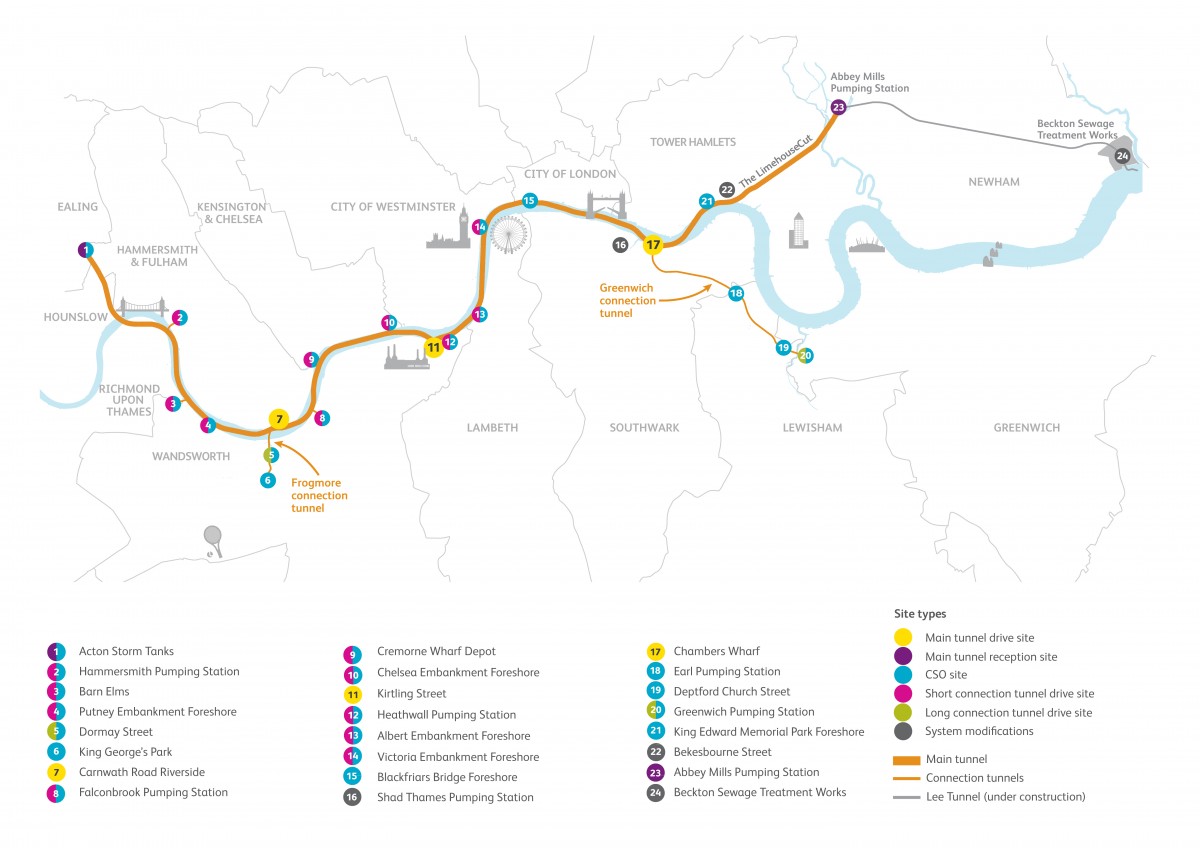Work on one of the biggest infrastructure projects ever undertaken in Europe, the new Thames Tideway Tunnel (TTT), is now underway. With a current budget of some £4.2 billion, construction of the tunnel will take seven to eight years with a final completion target of 2023.
London’s current sewer system (built mainly in Victorian times) is no longer fit for purpose and spills millions of tonnes of sewage into the tidal section of the Thames every year. The new 7.2m diameter, 25km tunnel, will run up to 65m below ground from Acton to the Abbey Mills Pumping station in Stratford, mostly under the tidal section of the River Thames and will provide capture, storage and conveyance of almost all London’s combined raw sewage and rainwater discharges. The new tunnel will tackle the problem of overflows from the capital’s sewers for at least the next 100 years, as well as enabling the UK to meet European environmental standards.
Over recent years, Beckett Rankine has been involved in the planning and development of the River Thames related infrastructure for new tunnel in several capacities. With our unparalleled knowledge of the river’s waterfront structures, we have advised on the development of the overall scheme and designed structures (including organising planning and consents) for shipping out spoil from the tunnel excavation and for receiving spoil for disposal and/or reclamation at downriver sites. Our work is ongoing through to the detailed design and implementation stages, and we expect to be involved with the project throughout the tunnel’s construction.
The project is very much focused on the river Thames with 11 of the 24 construction sites required for access to the tunnel being located on the river itself. Inevitably this means that there will be some disruption to the navigation of the river. However, plans are already underway to mitigate and minimise the effects of any navigational exclusion zones or increased waterway traffic that may occur during construction.


